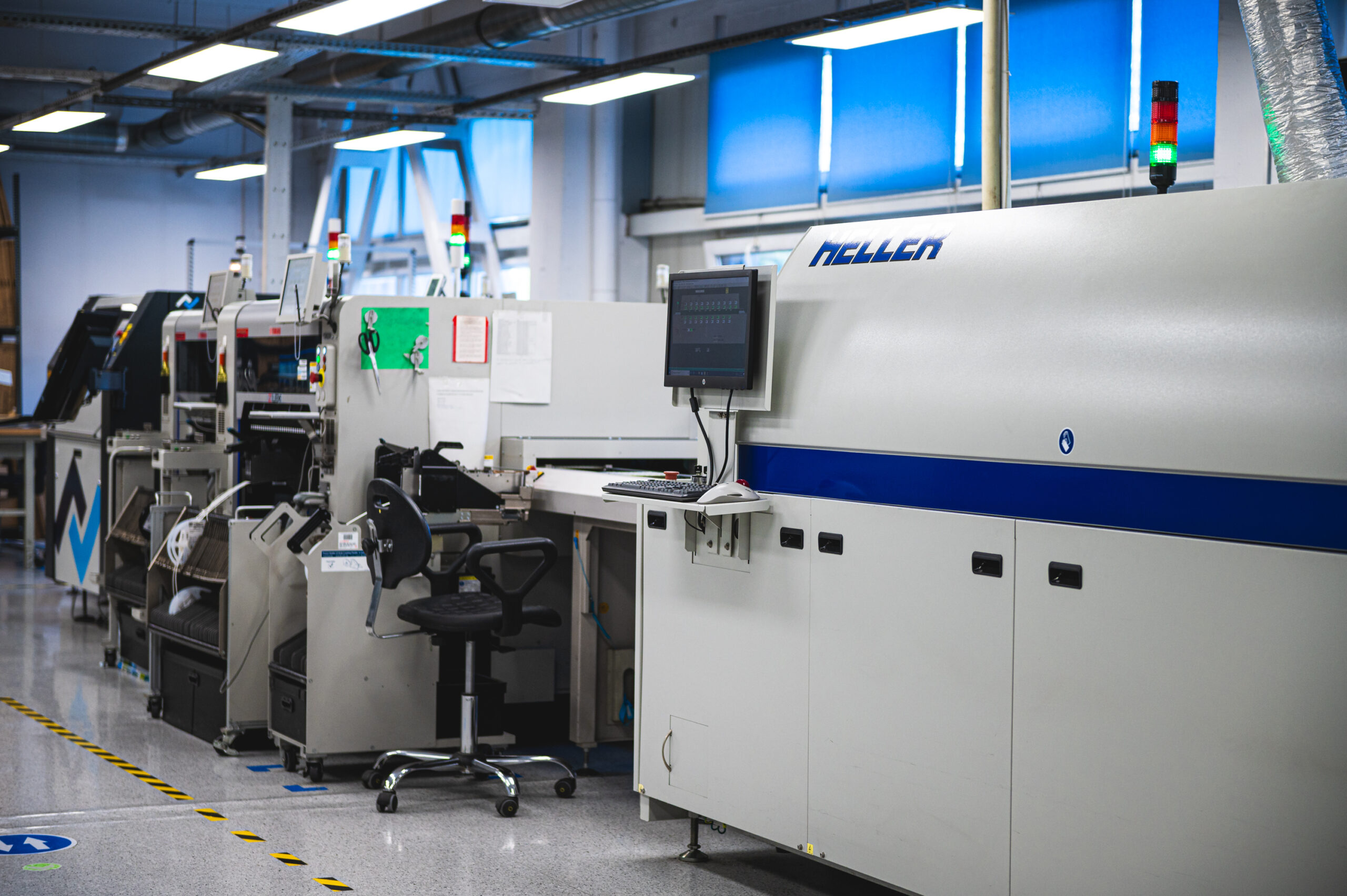
In-house vs EMS: 7 hidden costs of In-house Electronics Manufacturing
As their businesses grow, many electronics companies face a key dilemma: should they build their own production line, or outsource assembly to an EMS (Electronics Manufacturing Services) provider?
At first glance, in-house production seems to offer full control and potential savings. In reality, however, the hidden costs and risks often outweigh the benefits – especially in today’s volatile economic environment.
In this article, we highlight seven of the most significant and often overlooked costs of in-house production – factors that make outsourcing electronics manufacturing not only more cost-effective, but also safer and more sustainable in the long run.
Setting up an SMT line requires millions in investment – just to get started. Advanced pick-and-place machines, reflow ovens, AOI systems, ICT and functional testers, selective soldering lines, and automated warehouses all demand significant budgets.
What’s more, assembly equipment depreciates quickly as technology evolves. Upgrades, expansions, and replacements generate recurring expenses. For many companies, these costs remain “invisible” when compared to the seemingly simple EMS price list.
EMS providers, however, spread investment costs across hundreds of customers. This means the end customer only pays for the actual production time used – and avoids the risk of outdated technology.
An SMT line is not just about the machines – it also requires continuous spending on servicing, calibration, spare parts, and software licences for MES and ERP systems.
For example, upgrading a pick-and-place programming system or servicing a reflow oven can cost as much as outsourcing the assembly of several thousand PCBs to an EMS partner.
Unplanned downtime due to breakdowns, shortages of spare parts, or programming errors also leads to financial losses. EMS mitigates this risk with backup infrastructure and experienced service teams.
Electronics manufacturing demands highly skilled personnel: SMT operators, process engineers, quality inspectors, warehouse staff, and often MES programmers.
In competitive labour markets such as Poland and Germany, employee turnover is high, and the cost of training and onboarding new staff continues to rise.
EMS providers eliminate this challenge – they maintain their own expert teams, invest in continuous training, and operate with scalable resources. This allows their customers to focus on R&D and sales instead of workforce management.
Running in-house production means taking full responsibility for supply chain management – purchasing, logistics, forecasting, delivery control, and traceability. In times of shortages (such as the recent chip crisis), this can be a major challenge.
EMS providers have far stronger purchasing power. Thanks to their scale, they secure preferential pricing, access to global inventories, and trusted distributor relationships.
This not only means lower component costs, but also ensures parts authenticity, reducing the risk of counterfeits.
At JM elektronik, one of our pillars for over 35 years has been electronic component distribution. Decades of market expertise and supplier relationships allow us to quickly source alternatives when components become unavailable.
To meet market requirements – especially in sectors such as medical or industrial – production must comply with strict quality standards (e.g., IPC-A-610).
Implementing these standards requires audits, quality systems, training, and continuous reporting – all of which come at a cost.
EMS providers already operate within these frameworks. Features such as traceability, 3D AOI inspection, and advanced quality-control procedures are standard, which eliminates the need for additional staff or investment.
Building an in-house line means taking on the risk of fluctuating production volumes. When demand drops, the line sits idle – but fixed costs like leasing, salaries, and servicing remain.
With EMS, customers only pay for the production they actually order. Fixed costs are absorbed by economies of scale, giving companies the flexibility they need in today’s unpredictable markets.
Launching an in-house SMT line requires months of setup, configuration, and optimisation. EMS providers, however, streamline the NPI (New Product Introduction) process – often starting production within weeks.
In today’s fast-paced markets, shorter time-to-market can be the decisive factor between a product’s success and failure.
Rising labour costs, supply chain pressures, geopolitical risks, and component shortages are driving more companies toward outsourcing.
For German companies in particular, outsourcing to Poland offers a convincing advantage: lower production costs without sacrificing quality. Proximity also ensures faster delivery times, smoother communication, and the benefits of EU and Schengen integration.
Outsourcing EMS services is far more than a price-per-board calculation – it is a strategic decision. By outsourcing, companies free up capital and resources that would otherwise be tied to running their own production lines. This enables them to focus on innovation, product development, and sales.
Partnering with an experienced EMS provider gives access to the latest technologies, manufacturing solutions, and know-how – without the high capital investment of in-house production. Just as importantly, it significantly reduces operational and supply chain risks.
A closer look at these seven hidden costs makes it clear: in-house production is not only more expensive, but also less flexible and riskier than outsourcing to an EMS partner.
If you are considering optimising costs and accelerate time-to-market, it may be time to speak with an EMS partner.
Fill out the contact form below – very often, even at the analysis stage, it becomes clear that outsourcing is not a cost, but an investment in long-term competitive advantage.



